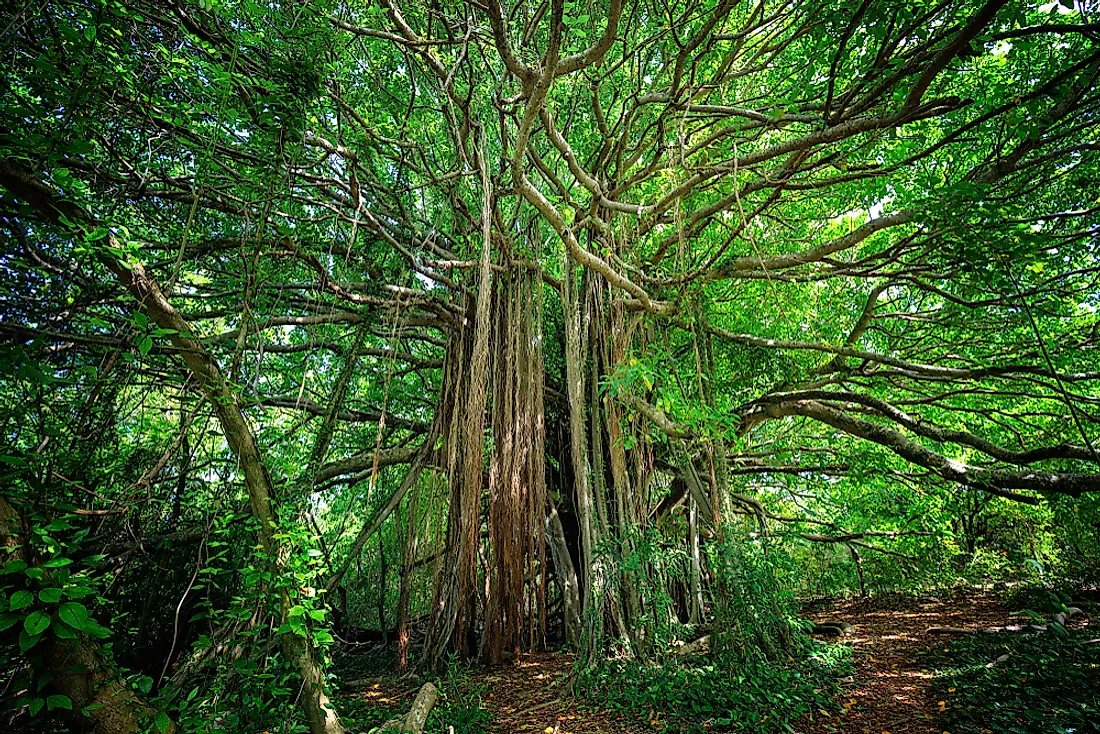Why Is The Strangler Fig Tree Called So?

Strangler fig trees are tree species of the Ficus genus which are so named due to their strangling tendencies onto other trees that are exhibited while the fig trees are developing. This type of fig tree starts its life cycle as a hemiepiphyte, growing onto an older tree, which often ultimately dies after being overwhelmed by the strangler, and after decaying leaves the fig tree with a hollow core. Another behavior seen in all strangler fig trees is the dropping of the aerial roots to the ground where they offer extra support to the bulky tree as supplementary trunks, a process that gives the trees their characteristic buttress appearance. Strangler fig trees are found in many of the world’s subtropical and tropical forests and are keystone species in their respective environments. Some examples of strangler fig trees include the Moreton Bay fig tree, the shortleaf fig tree, and the white fig tree.
The Shortleaf Fig Tree
The shortleaf fig tree is one example of a strangler fig tree. The tree species whose binomial name is the “Ficus citrifolia” is found in the jungles of Latin America. The shortleaf fig tree shares many structural features with another fig tree, the “Ficus aurea” with the primary distinguishing feature being the veining of the leaves. When mature, the tree can be as much as 50 feet in height. This tree species is only pollinated by the agonid wasp, an insect with which it has a symbiotic relationship. Like other fig trees, the shortleaf fig tree is a keystone species in its environment as its fruits are food to many animal species while its trunk and branches are the habitats of a large variety of animals.
The Moreton Bay Fig
Another strangler fig tree is the Moreton Bay fig, which is also known as the “Ficus macrophylla.” The fig tree is native to Australia and is found in large concentrations in Australia’s eastern coast, including Moreton Bay from where it gets its name. A notable feature of this fig tree is its immense size, with some mature trees reaching 200 feet in height. The tree’s leaves are also distinctively large and can be 12 inches in length (the tree’s name “macrophylla” translates to “large leaf”). The root system of the Moreton Bay fig tree spreads over a large area. The fruits of the Moreton Bay are food to countless animals, ranging from ants to birds.
The White Fig Tree
The white fig tree is a strangler that is native to the jungles of Southeast Asia. The tree’s binomial name is the “Ficus virens.” The white fig tree is medium-sized, reaching a maximum height of 105 feet but averaging between 79 and 89 feet in height. However, the crown of the tree is massive, and is in some mature trees, bigger than the tree’s height. One notable example of a white fig tree is the “curtain fig tree,” whose aerial roots descending from the branches have the appearance of a curtain. The special structural appearance of this white fig tree, which is situated near Cairns, makes it a top tourist attraction in the area.











